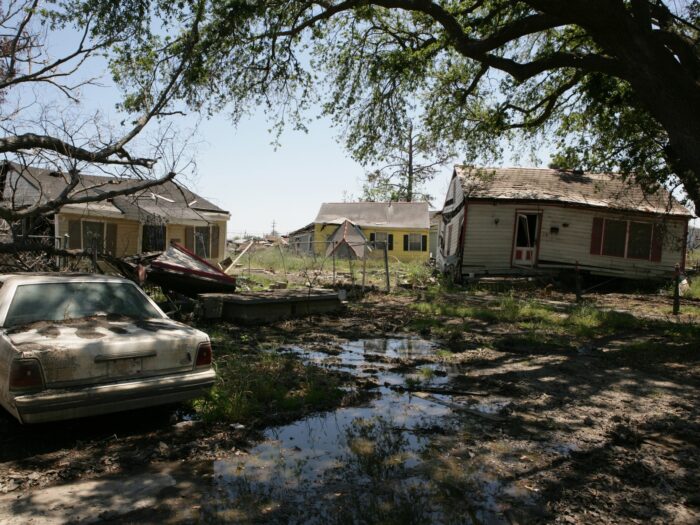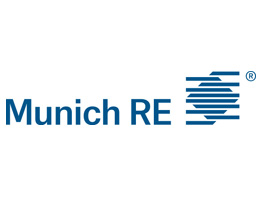Hurricane Katrina’s Legacy: $100 Billion Storm Could Strike Again

Twenty years after Hurricane Katrina devastated the Gulf Coast, new analysis reveals that a similar storm today would generate nearly $100 billion in insured losses—only slightly less than the original event’s inflation-adjusted toll, despite significant improvements in flood defenses and building standards.
The findings underscore how rising coastal populations and climate change are offsetting the impact of protective investments, such as flood defenses, according to a report from Swiss Re Institute.
“Hurricane Katrina changed the insurance industry forever — not just because of the scale of losses, but because it exposed just how vulnerable some of our communities are,” said Mohit Pande, chief property underwriting officer for Swiss Re.
“Two decades on, we’ve made real progress in mitigating risk in the region following lessons learned that highlighted the need for stronger levees, better building codes and smarter land use. Efforts like these should be applauded but they must accelerate to continue to build our resilience to extreme weather events. If we want to keep disaster risks insurable in a changing world, we need to invest in mitigation before the storm, not just recovery after.”
Rising Storm Surge: Tropical Cyclones Dominate Insurance Losses
Tropical cyclones have emerged as the dominant force in insured natural catastrophe losses, accounting for 39% of all insured losses over the past decade, and claiming 37% of insured losses over the past 40 years, according to the report.
Major hurricanes causing more than $30 billion in damages each have become the primary driver of this escalation, representing nearly two-thirds of all North Atlantic tropical cyclone losses between 2015-2024, according to Swiss Re Institute. This marks a significant increase from prior decades and signals rising loss severity rather than just frequency, according to the report.
The surge in losses stems largely from America’s growing coastal population, with more than 60 million people now living in areas highly exposed to tropical cyclone risk, Swiss Re Institute noted. Census data shows this demographic shift has outpaced adaptation measures, creating a dangerous mismatch between exposure and protection. In addition, inflationary pressures on construction and repair costs further amplify the financial impact, making post-storm rebuilding increasingly expensive, the report added.
Climate change adds another layer of complexity to future projections. While the frequency of tropical cyclones remains uncertain, scientists expect storm intensity to increase with rising temperatures. Coastal areas face heightened storm surge risks from both stronger storms and rising sea levels, while tropical cyclones are projected to produce 13-17% more rainfall volume for each degree of temperature increase, Swiss Re Institute noted.
Balancing Protection Gains Against Growing Vulnerabilities
The New Orleans case study illustrates both progress and persistent challenges in hurricane preparedness. Following Katrina in 2005, federal and state governments invested $14.6 billion in rebuilding the city’s flood defense systems, creating the Hurricane Storm Damage Risk Reduction System designed to withstand 100-year storm surges. The system’s effectiveness was demonstrated when it prevented widespread flooding during 2021’s Hurricane Ida, a Category 4 storm, per the report.
However, these defensive improvements face significant headwinds. New Orleans’ metropolitan area population remains 20% below pre-Katrina levels, reflecting the long-term economic displacement that major disasters can trigger. The original storm created a protection gap of $120 billion, with only 47% of economic losses from Katrina covered by insurance, hampering full recovery.
The experience of New Orleans reveals a troubling pattern: communities may become more resilient to specific hazards while remaining vulnerable to others. New Orleans’ levees protect against storm surge but cannot prevent wind damage or flooding from intense rainfall within the protected area, according to the report. Similarly, improvements in one location don’t address vulnerabilities elsewhere along the expanding coastal development corridor.
Insurance industry evolution since Katrina demonstrates both adaptation and ongoing challenges. Insurers have significantly improved their catastrophe modeling to incorporate “super cat” effects—the unexpected loss-driving factors that contribute to the largest disaster events. Pre-Katrina models focused primarily on wind damage; today’s sophisticated systems account for storm surge and hurricane-related rainfall.
Policy language has also evolved following extensive post-Katrina litigation over wind versus flood damage claims, the report noted. Clearer coverage definitions and improved claims adjusting practices have reduced ambiguity, though flood insurance uptake rates remain problematically low among homeowners in many coastal areas—less than 20% in regions affected by Hurricane Harvey, according to McKinsey analysis cited in the report.
Comprehensive Adaptation Strategies Show Promise But Need Acceleration
Post-disaster reforms have improved building code standards, with Louisiana adopting its first statewide building codes and Mississippi implementing stricter requirements in coastal counties.
Yet implementation gaps persist nationwide. Only 35% of U.S. jurisdictions have adopted modern and more stringent building codes for new construction, despite National Institute of Building Sciences estimates showing $6-$12 in benefits for every dollar invested in such mitigation efforts, the Swiss Re Institute report noted.
Recent research on the impact of 2020’s Hurricane Sally found that universal adoption of the insurance Institute for Business & Home Safety’s FORTIFIED roof standards in Alabama’s coastal counties would have reduced loss ratios from the hurricane by 51-75%, saving insurers $105.6 million.
Beyond individual structures, broader infrastructure investments show measurable returns. New Orleans’ comprehensive zoning ordinance, enacted in 2015 after a decade-long revision process, provides a framework for risk-informed development decisions. The ordinance governs land use, building heights, setbacks, and design standards throughout the city.
View the report here. &










